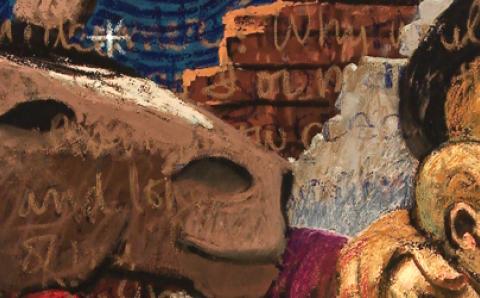I knew someone once who was very much interested in tracing his lineage back as far as he could. But when he got to the 15th century, he found an ancestor lurking in the family tree who embarrassed him. He stopped his search right there and closed the file. You never know what or whom you might find when you dig deeply enough into the record.
"This family tree drips with grace."
Advent is a time of preparation. And one good way of preparing again for the coming of Christ is to look into his family tree. The Gospel of Matthew provides us with one that goes all the way back to Abraham.
It’s amazing what we find when we look closely. If you start reading the genealogy of Jesus aloud and hope to be inspired, you will probably be disappointed. You may find quite soon that reading it is not only not interesting but quite trying. Biblical Hebrew is certainly not our first tongue, and some of those names are humdingers! Amminadab, Jehoshaphat, Jeconiah, Zerubbabel—not exactly the stuff inspiration is made of.
So stop hearing it and just look at it, lying there on the page. You can quite readily see that the first 17 verses are laid out in three distinct paragraphs. And if you count the names without trying to pronounce them, you’ll find 14 in each paragraph. That’s a design meant to help you and me remember.
The first paragraph covers a time of greatness, of growth, of hope and vision. The second a time of demise, of fall and shame, of disaster and the effects of human sin. And the third paragraph takes us from slavery to liberation, from imprisonment to release, from darkness to light all the way to Jesus.
It’s the story of creation, fall, and redemption. It’s Jesus’ story. It’s our story.
No doubt there were more than 14 generations in each of those eras. But they are summarized into precisely 14 because 14 is the numerical value of the Hebrew letters in the name David, the one to whom God made the solemn promise to keep his descendant on the throne forever. Fourteen is a numerical way of whispering “faithfulness” at each turn in the story, reminding us that what God says, God does.
There is a feature in this genealogy that would not have appeared in any other genealogy of the day. And it appears five times in this one: the names of women. Tamar, Rahab, Ruth, Bathsheba, and Mary.
These are not just any women; they are women with sad chapters in their stories. Not only is gender no longer a qualification or disqualification, behavior is not a qualification either. This is God’s way of saying boldly and emphatically that no one is excluded on the basis of who she is or what he has done. This family tree drips with grace, and the same grace falls on you and me too.
Most of the names in this “record of the genealogy of Jesus Christ” are completely unknown. There is even a message in that. We may not know them. We may have lost track of them. But they are known to God, loved by him, and kept for him. God’s mercy is everywhere in this family tree.
Take the time to look at it this tree during Advent this year. It’s not just a genealogy. It’s not even just Jesus’ genealogy. It’s yours and mine! And it speaks of God’s faithfulness and reliability. It speaks of God’s grace. It speaks of God’s mercy. It speaks of God’s Son and our Savior.
We call it a family tree. But the opening words of Matthew point to another tree not mentioned until near the end of this gospel. This tree looms, for Jesus at least, from the opening few words in the story. The one whose “tree” we see in chapter 1 is heading already to the other tree in chapter 27. And that’s ultimately why the “tree” in chapter 1 is yours and mine—because the tree in chapter 27 was his.
It’s amazing what you can find when you look in the record.
About the Author
Rev. Joel R. Boot is the executive director of the Christian Reformed Church in North America.









